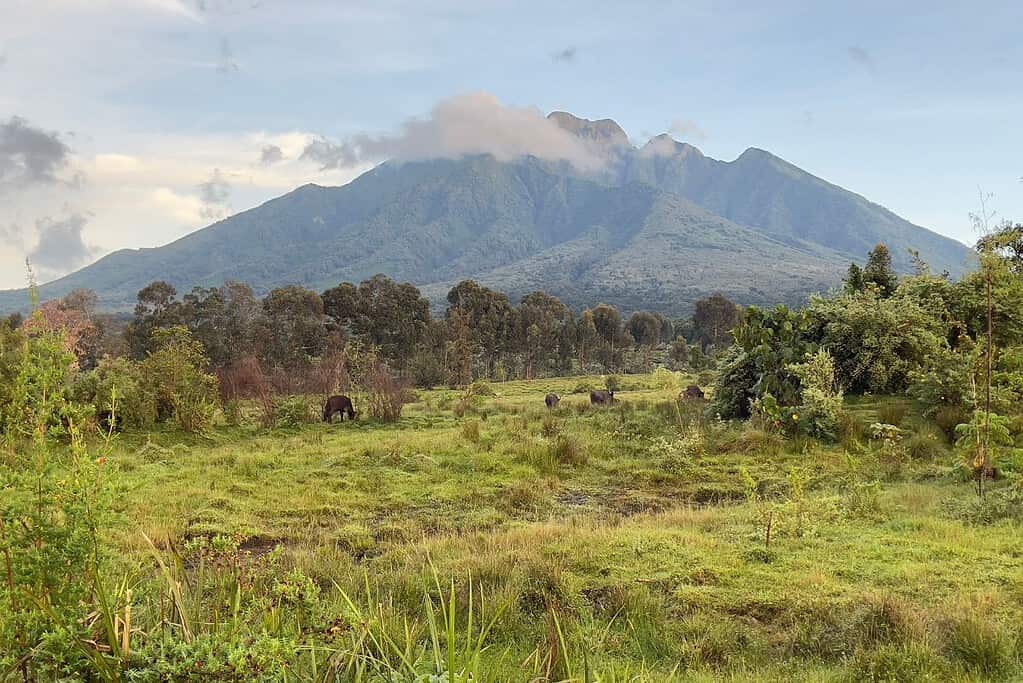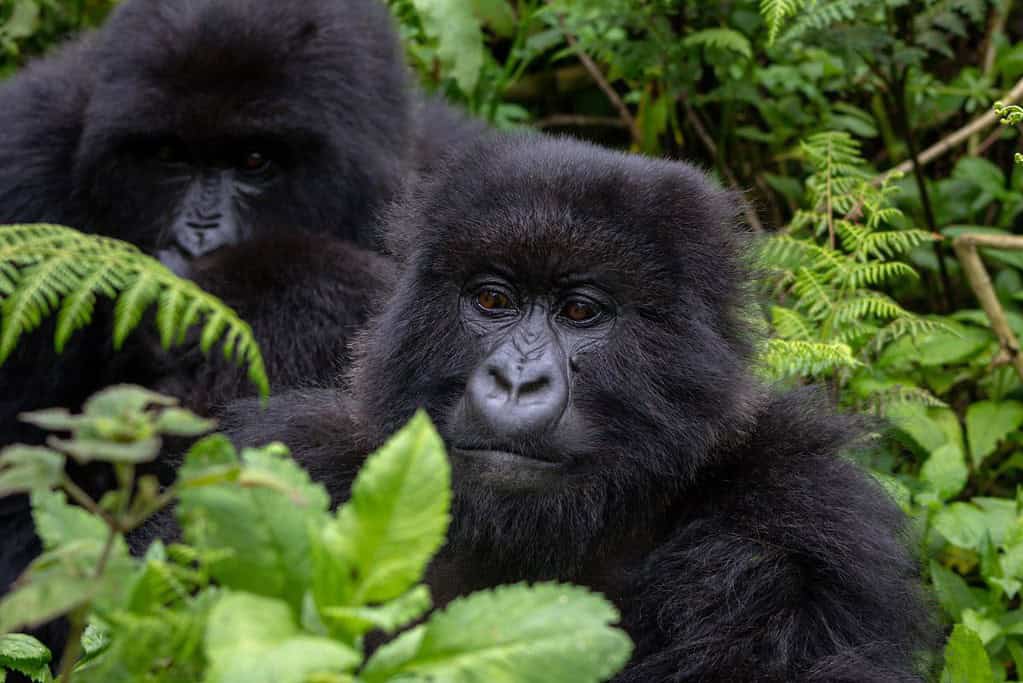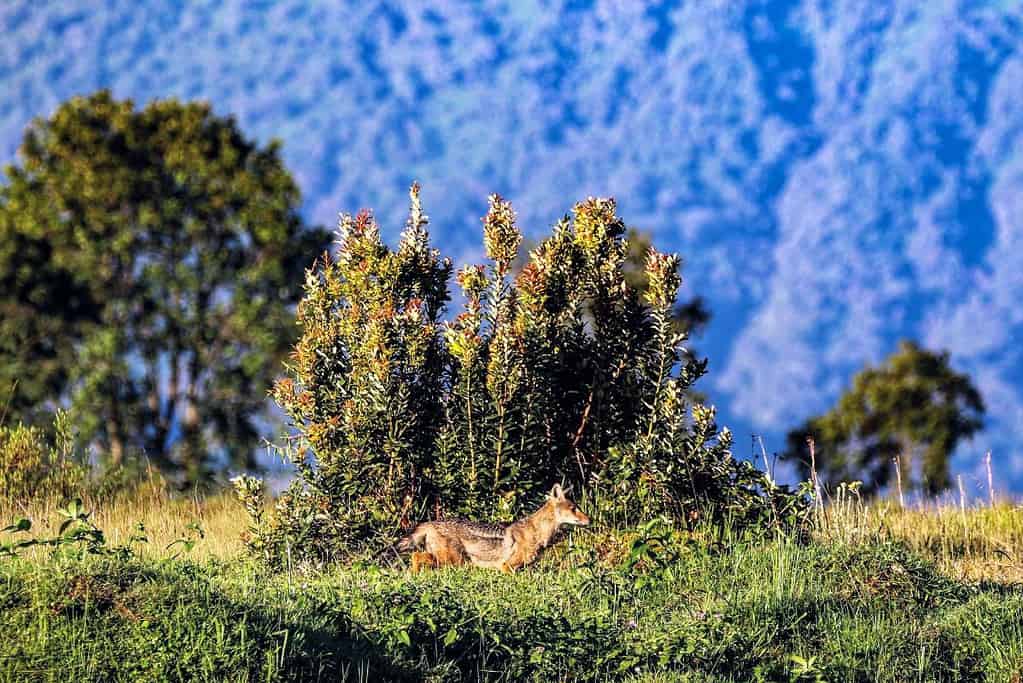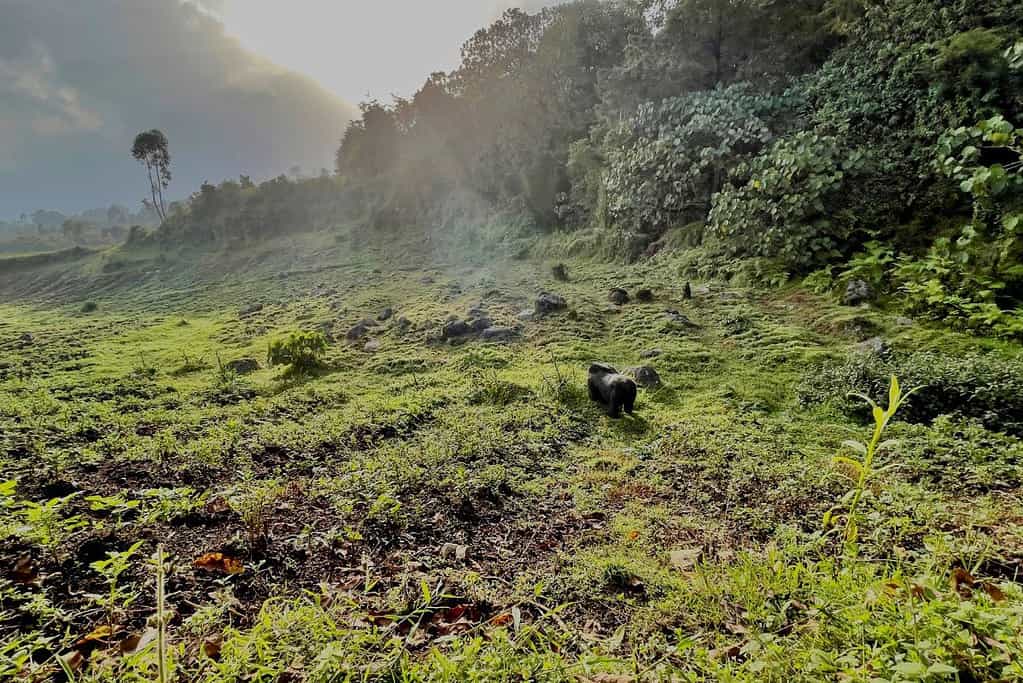Nestled in the heart of Rwanda, Volcanoes National Park is a spectacular natural sanctuary, renowned not only for its breathtaking landscapes but also as the home of the famous mountain gorillas. This blog post delves into the enchanting world of this park, exploring its diverse wildlife, rich history, and the thrilling experiences it offers to visitors.
Table of Contents
Introduction to Volcanoes National Park
Volcanoes National Park, part of the larger Virunga Conservation Area, spans across northwestern Rwanda and borders Virunga National Park in the Democratic Republic of Congo and Mgahinga Gorilla National Park in Uganda. This region is famous for its rugged mountains and dormant volcanoes, which create a stunning backdrop against the lush greenery of the rainforests.

The Geographical Marvel of the Park
The park’s landscape is dominated by the Virunga Mountains, consisting of six extinct and three active volcanoes which stretch across Rwanda, Uganda, and the DRC. This unique topography not only provides a dramatic visual spectacle but also forms the ideal habitat for a variety of species, particularly the endangered mountain gorillas.
A Sanctuary for Mountain Gorillas
Volcanoes National Park is perhaps best known for being one of the last refuges for the critically endangered mountain gorillas. These majestic creatures are among the most powerful and poignant symbols of wildlife conservation. The park provides a safe haven for about a third of the world’s mountain gorilla population, making it a key site for conservation efforts and research.

Gorilla Trekking: A Transformative Experience
Gorilla trekking in Volcanoes National Park is a profound journey that many describe as a life-changing experience. Visitors are guided through the park’s dense forests by experienced rangers who lead them to one of the several habituated gorilla families. This intimate encounter allows one to observe gorillas in their natural habitat, witnessing their daily lives, behaviors, and interactions within the troop.
Diverse Wildlife Beyond Gorillas
While the mountain gorillas are the stars of the park, Volcanoes National Park is also home to a rich array of other wildlife. The park’s ecosystems range from montane forests to bamboo forests, providing habitats for numerous other species:
- Golden Monkeys: Another endangered species, the golden monkeys, are vibrant primates that can be found leaping in the bamboo forests. Their striking orange-gold coats contrast beautifully against the green backdrop.
- Bird Species: For birding enthusiasts, the park offers an opportunity to spot some of the 178 bird species recorded here, including the Rwenzori turaco and the handsome francolin.
- Other Fauna: The park also hosts spotted hyenas, buffaloes, elephants, and numerous species of smaller mammals and reptiles.

Conservation Efforts and Community Involvement
Conservation in Volcanoes National Park is a community-centric model. The revenue from tourism, particularly from gorilla trekking, plays a crucial role in the conservation activities. A significant portion of the park fees is directed towards community projects, which helps in gaining the local population’s support for wildlife protection efforts.
Engaging with Local Communities
Visitors to the park can engage with local communities through cultural tours or community-led accommodation options. These interactions provide insights into the local culture and traditions and how the communities coexist with the biodiversity of the park.
Sustainable Tourism Practices
Tourism in Volcanoes National Park is carefully managed to ensure minimal environmental impact. The number of visitors allowed to participate in gorilla trekking is limited each day to reduce stress on the animals and minimize ecological damage. Tourists are also educated on the importance of respecting wildlife and following guidelines that help in the conservation of the park.
Exploring the Natural Wonders of Volcanoes National Park
Visiting Volcanoes National Park is not only about experiencing its wildlife; it’s also about immersing oneself in the natural beauty that the landscape itself offers. From the dense, lush rainforests to the stark volcanic peaks, each aspect of the park offers a unique perspective on the power and beauty of nature.
Hiking the Virunga Volcanoes
For the adventurous at heart, hiking the Virunga volcanoes presents an exhilarating challenge. The park offers various trekking routes that cater to different fitness levels:
- Mount Karisimbi: The highest of the Virunga Volcanoes, Karisimbi stands at an elevation of 4,507 meters. It’s a two-day hike that offers stunning views and the chance to camp on a mountain, surrounded by the sounds of the wild.
- Mount Bisoke: A popular one-day hike, Mount Bisoke features a beautiful crater lake at its summit. The trek provides spectacular scenic vistas and opportunities to spot diverse plant life and bird species.
- Dian Fossey Tomb Trail: This trail leads to the Karisoke Research Center, where renowned primatologist Dian Fossey conducted her groundbreaking gorilla research. It’s a significant site for those interested in conservation history.

Volcanic Caves
Exploring the Musanze Caves is another highlight of the park. Formed by centuries of geological activity, these caves offer a glimpse into the volcanic past of the region. Tours are guided by knowledgeable locals who share insights about the formation and history of the caves, as well as their role in local folklore.
Conclusion
Volcanoes National Park is not just a location on a map; it is a vibrant ecosystem, a cornerstone of conservation, and a place of profound natural beauty. Visiting the park offers a chance to witness the majesty of the mountain gorillas and explore the rich biodiversity of Rwanda. Each journey here contributes to the ongoing efforts to preserve this incredible habitat, ensuring that it continues to inspire and awe future generations.
Exploring Volcanoes National Park is truly an unforgettable adventure, where the beauty of nature meets the heart of conservation.
